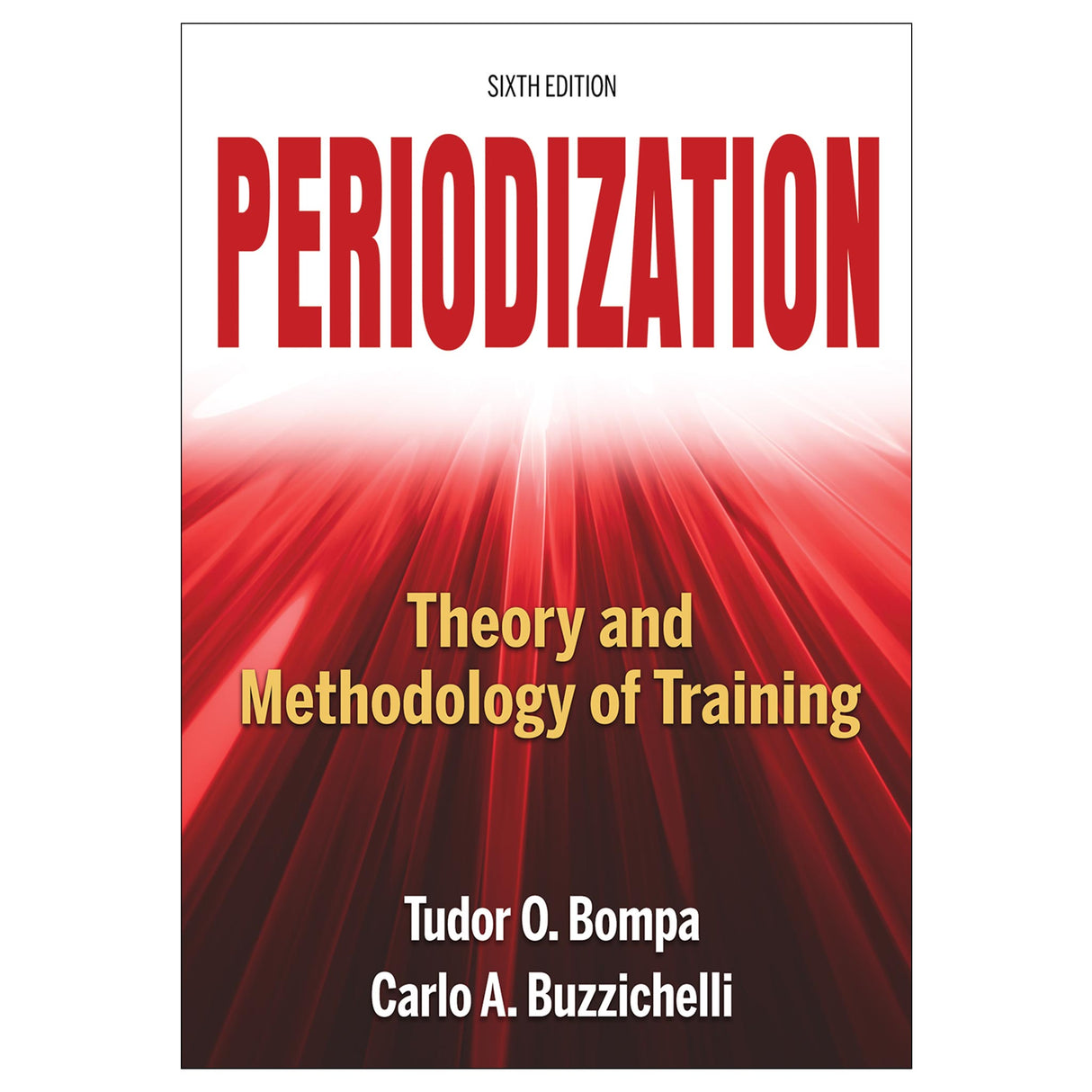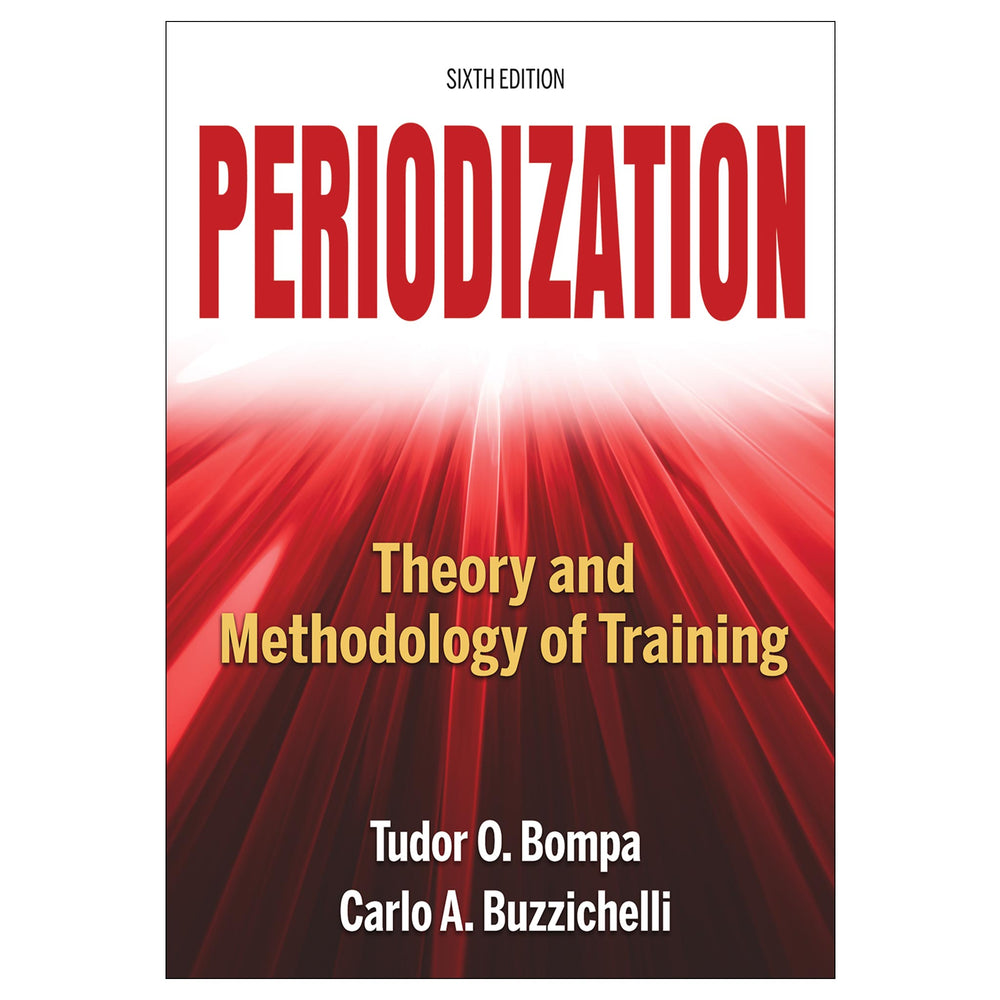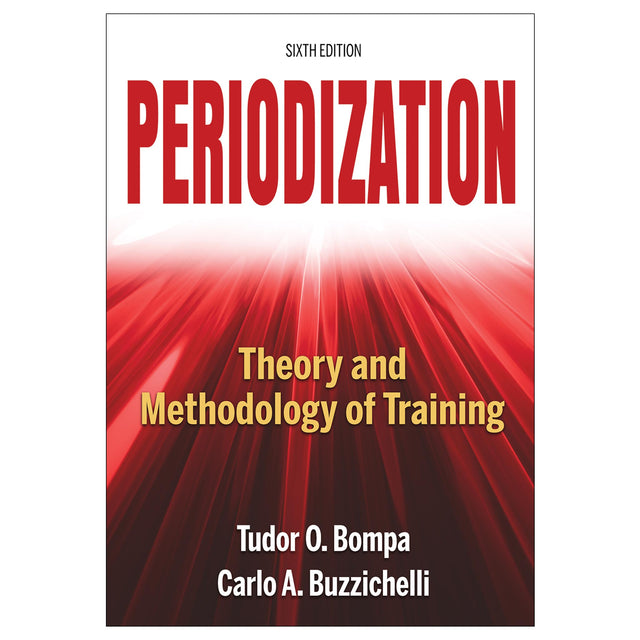Periodization 6th Edition PDF
Theory and Methodology of Training
Author: Tudor O. Bompa, Carlo Buzzichelli
$77.95 CAD
Access Duration: 10 Years
Learn how to maximize training gains with Tudor O. Bompa, the pioneer of periodization training, and Carlo A. Buzzichelli, one of the world’s foremost experts on training methods, in the sixth edition of Periodization: Theory and Methodology of Training. Guided by the authors’ expertise, the sixth edition offers information central to understanding the latest research and practices related to training theory while providing scientific support for the fundamental principles of periodization.
The sixth edition of this definitive text presents a comprehensive discussion of periodization based on the philosophy of Tudor Bompa. It features the following:
• A review of the history, terms, and theories related to periodization
• Discussion of the importance of designing a sport-specific and competition-level annual plan and discarding any one-size-fits-all approach
• An expanded chapter on the integration of biomotor abilities within the training process
• Comprehensive updates to the information on training sessions, microcycles, and macrocycles
• An expanded chapter on the methods for developing muscle strength, including manipulation of loading variables and the conversion to specific strength
• A more detailed explanation of speed and agility training, differentiating between individual and team sports
In addition to applying periodization models to resistance training, Periodization also discusses sport-specific endurance. You’ll be introduced to different methods of testing and developing endurance, including the physiological basis for each method.
Instructors will also find a newly added image bank, allowing access to tables and figures in the text for use when creating lecture materials.
Periodization: Theory and Methodology of Training presents the latest refinements to Bompa’s theories on periodization to help you create training programs that enhance sport skills and ensure peak performance.
Part I. Training Theory
Chapter 1. Basis for Training
Scope of Training
Objectives of Training
Classification of Skills
System of Training
Adaptation
Supercompensation Cycle and Adaptation
Sources of Energy
Summary of Major Concepts
Chapter 2. Principles of Training
Multilateral Development Versus Specialization
Individualization
Development of the Training Model
Load Progression
Sequence of the Training Load
Summary of Major Concepts
Chapter 3. Preparation for Training
Physical Training
Exercise for Physical Training
Technical Training
Tactical Training
Theoretical Training
Summary of Major Concepts
Chapter 4. Variables of Training
Volume
Intensity
Relationship Between Volume and Intensity
Frequency
Complexity
Index of Overall Demand
Summary of Major Concepts
Part II. Planning and Periodization
Chapter 5. Periodization of Biomotor Abilities
Brief History of Periodization
Periodization Terminology
Applying Periodization to the Development of Biomotor Abilities
Simultaneous Versus Sequential Integration of Biomotor Abilities
Periodization of Strength
Periodization of Power, Agility, and Movement Time
Periodization of Speed
Periodization of Endurance
Integrated Periodization
Summary of Major Concepts
Chapter 6. Planning the Training Session
Importance of Planning
Planning Requirements
Types of Training Plans
Training Session
Daily Cycle of Training
Modeling the Training Session Plan
Summary of Major Concepts
Chapter 7. Planning the Training Cycles
Microcycle
Macrocycle
Summary of Major Concepts
Chapter 8. Periodization of the Annual Plan
Annual Training Plan and Its Characteristics
Classifying Annual Plans
Chart of the Annual Training Plan
Criteria for Compiling an Annual Plan
Summary of Major Concepts
Chapter 9. Peaking for Competition
Training Conditions for Peaking
Peaking
Defining a Taper
Competition Phase of the Annual Plan
Identifying Peaking
Maintaining a Peak
Summary of Major Concepts
Part III. Training Methods
Chapter 10. Strength and Power Development
The Relationship Between the Main Biomotor Abilities
Strength
Methods of Strength Training
Manipulation of Training Variables
Implementation of a Strength Training Program
Periodization of Strength
Summary of Major Concepts
Chapter 11. Endurance Training
Classification of Endurance
Factors Affecting Aerobic Endurance Performance
Factors Affecting Anaerobic Endurance Performance
Methods for Developing Endurance
Methods for Developing High-Intensity Exercise Endurance
Periodization of Endurance
Summary of Major Concepts
Chapter 12. Speed and Agility Training
Speed Training
Agility Training
Program Design
Periodization of Speed and Agility Training
Summary of Major Concepts
Link training periods with a transition phase
Understand the objectives of training
Image bank. Features most of the figures and tables from the text, organized by chapter. Images can be used in classroom presentations and lectures, handouts, and activities.





